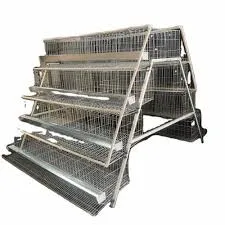animal feed pelletizer machines
Dec . 01, 2024 02:30 Back to list
animal feed pelletizer machines
Animal Feed Pelletizer Machines Enhancing Livestock Nutrition and Productivity
In the rapidly evolving world of animal husbandry, the need for efficient and quality feed production has never been more paramount. As livestock farming becomes increasingly competitive, many farmers are turning to advanced technologies to enhance their operations. One such technology is the animal feed pelletizer machine, a crucial piece of equipment that plays a significant role in the production of high-quality animal feed.
Animal feed pelletizer machines are designed to compress raw materials into compact pellets that can be used as feed for various livestock, including poultry, pigs, cattle, and fish. The process of pelletizing not only transforms feed ingredients into a more manageable form but also improves the nutritional value of the feed by reducing waste and enhancing digestibility.
One of the key benefits of using a pelletizer machine is the ability to create uniform and consistent feed pellets. This uniformity ensures that each animal receives the same amount of nutrients, which is crucial for maintaining health and optimizing growth rates. In contrast, traditional loose feed can lead to selective eating behaviors, where animals pick and choose their favorites, possibly resulting in nutritional imbalances.
Furthermore, the pelletizing process helps to enhance the palatability of feed. Many livestock species have preferences for certain feed textures, and pelleted feed often appeals to these preferences. The attractive aroma and taste of pellets can lead to increased feed intake, thus promoting better growth and weight gain in livestock.
animal feed pelletizer machines

In addition to nutritional benefits, animal feed pelletizer machines offer economic advantages for farmers. The production of pellets can be more cost-effective than the use of whole grains or loose feed. By concentrating feed ingredients into pellets, farmers can reduce storage costs, decrease transport expenses, and minimize feed waste. Pellets are easier to store and handle, which is vital for large-scale operations.
Moreover, pelletizing can enhance the shelf life of feed. The heat generated during the pelletizing process can kill harmful pathogens and reduce the moisture content, thus preventing spoilage and extending the usability of feed products. This is particularly important in regions where storage conditions may not be ideal.
There are various types of animal feed pelletizer machines available in the market, catering to different production scales and feed types. From small-scale, manual machines suitable for small farms to large, industrial-scale pelletizers that can produce tons of feed per hour, there is a suitable option for every type of operation. Farmers should select a machine based on their specific needs, considering factors such as the type of feed they produce, desired production capacity, and budget constraints.
In recent years, technological advancements have further improved the efficiency and performance of pelletizer machines. Features such as variable speed motors, automated control systems, and energy-efficient designs are making modern machines more user-friendly and environmentally sustainable. Farmers can now produce high-quality feed while minimizing their carbon footprint and energy consumption.
In conclusion, animal feed pelletizer machines represent a significant advancement in the livestock feed industry. By producing high-quality, palatable, and nutritionally balanced feed pellets, these machines help farmers improve livestock health and productivity while also offering economic benefits. As the demand for efficient animal feed solutions continues to grow, investing in a reliable pelletizer machine can be a game-changer for farmers looking to enhance their operations and ensure the well-being of their livestock. The future of animal nutrition is bright, and the pelletizing process is at the forefront of this transformative era in agriculture.
-
Hot Sale 24 & 18 Door Rabbit Cages - Premium Breeding Solutions
NewsJul.25,2025
-
Automatic Feeding Line System Pan Feeder Nipple Drinker - Anping County Yize Metal Products Co., Ltd.
NewsJul.21,2025
-
Automatic Feeding Line System Pan Feeder Nipple Drinker - Anping County Yize Metal Products Co., Ltd.
NewsJul.21,2025
-
Automatic Feeding Line System - Anping Yize | Precision & Nipple
NewsJul.21,2025
-
Automatic Feeding Line System - Anping Yize | Precision & Nipple
NewsJul.21,2025
-
Automatic Feeding Line System-Anping County Yize Metal Products Co., Ltd.|Efficient Feed Distribution&Customized Animal Farming Solutions
NewsJul.21,2025






